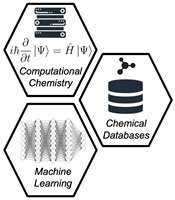Last Updated: 17 Mar 2025
Beckwith Review Series
This review underscores the pivotal role of high-level composite wavefunction methods in revolutionising the construction of highly accurate thermochemical databases. These breakthroughs are critical for generating large-scale thermochemical datasets, which are crucial for advancing density functional theory (DFT) methods and improving machine-learning models to enable more reliable chemical predictions. (Image credit: A. Karton.)

Treatment of diseases using nucleic acid-based approaches is of increasing importance. However, these drugs need to be delivered in nanoparticles to ensure high bioavailability. To ensure the formation of well-defined nanoparticles, flow assembly is increasingly employed. In this review, we map the pathways to nucleic acid-loaded polymer-based nanoparticles prepared by flow.
CH23029Photocycloadditions of benzene derivatives and their systematic application to organic synthesis

In intramolecular reactions of benzene derivatives with alkenes, meta or [2 + 3] photocycloadditions take place in competition with ortho or [2 + 2] additions and complex structures are obtained. The substitution pattern and the spin multiplicity significantly affect the competition between the two reaction modes. A topological analysis facilitates the application these photoreactions to target oriented synthesis.

This review article highlights the state of the art in solid-state SEC (ultraviolet–visible–near-infrared (UV-Vis-NIR), infrared (IR), Raman, photoluminescence, electron paramagnetic resonance (EPR), and X-ray absorption (XAS) spectroscopy) relevant to interrogating solid-state materials, particularly those in the burgeoning field of metal–organic frameworks (MOFs).
CH19109Redox-Initiated Reversible Addition–Fragmentation Chain Transfer (RAFT) Polymerization

The capability of several redox initiation systems and their application in initiating reversible addition–fragmentation chain transfer (RAFT) polymerization are reviewed. The redox-RAFT technique is therefore a core part of the RAFT methodology handbook and may be of particular significance going forward for the fabrication of polymer-based biomaterials under bio-related conditions.
CH13003Multi-Bond Forming Processes in Efficient Synthesis

The perfect synthesis is just one step away! Complex targets are being made in fewer operations. This review classifies the strategies for short syntheses, presents landmark recent examples, and offers predictions about the future.



